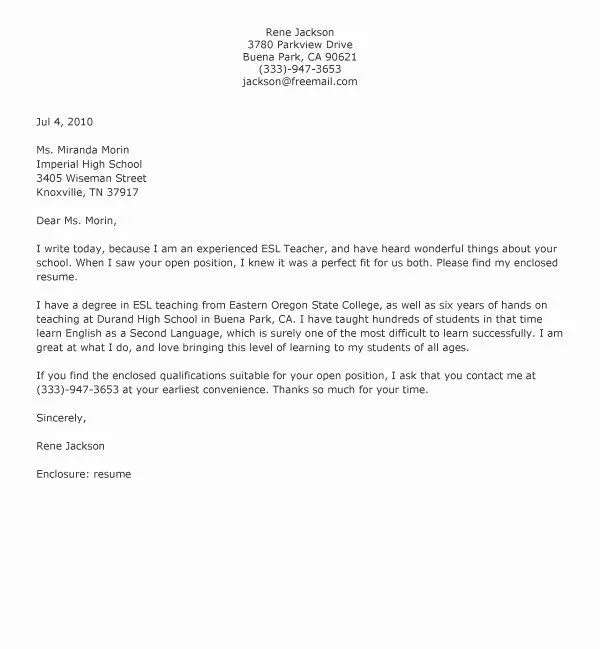Crafting a Compelling ESL Teacher Cover Letter
A well-crafted cover letter is your first impression on a potential employer. It’s your opportunity to showcase your skills, experience, and passion for teaching English as a Second Language. Unlike a resume, which provides a factual overview, a cover letter allows you to tell your story, connect with the reader on a personal level, and explain why you are the ideal candidate. It’s essential to make this document compelling, professional, and tailored to the specific job you are applying for. This guide will provide you with top 5 tips to help you craft a cover letter that will grab the attention of hiring managers and land you your dream ESL teaching job.
Highlighting Your ESL Teaching Skills
Your cover letter should prominently feature your ESL teaching skills. Focus on abilities that are directly relevant to the job description. These might include lesson planning, classroom management, curriculum development, and the ability to differentiate instruction to meet the diverse needs of learners. Be specific and provide examples. Instead of stating you are good at classroom management, describe how you create a positive and engaging learning environment where students feel safe and supported. Mention the strategies you use, such as using clear expectations, positive reinforcement, and proactive behavior management techniques. Always align your skills with what the employer is looking for; review the job posting carefully to understand their requirements.
Showcasing Relevant Experience
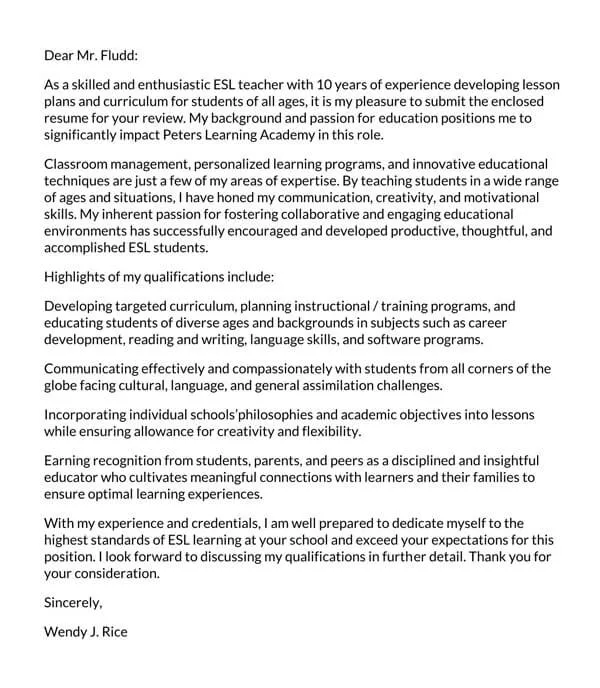
Your experience is a key selling point in your cover letter. Detail any ESL teaching experience, including the ages and proficiency levels of students you’ve taught. Provide context for your roles and responsibilities. If you’ve worked with specific curricula or teaching methodologies (e.g., communicative language teaching, task-based learning), mention them. Quantify your accomplishments whenever possible. For instance, instead of saying you improved student test scores, specify the percentage increase. Include details of any training programs, workshops, or professional development activities you’ve participated in to stay current with teaching best practices. If you are new to the field, highlight any experience working with children or in educational settings, even if it wasn’t specifically ESL related. The ability to relate to children is important and often the missing element.
Emphasizing Your ESL Certifications
ESL certifications are essential credentials for ESL teachers. Be sure to list all relevant certifications, such as TEFL, TESOL, or CELTA. Include the name of the certification, the issuing institution, and the date of completion. If the job posting specifies particular certifications, make sure yours are clearly visible. Some institutions may value certifications from certain institutions more than others, so familiarize yourself with the employer’s preferences. If you are pursuing a certification, mention the expected completion date. If you have any specialized training or endorsements, include them as well. For example, you may have training in teaching young learners, teaching online, or teaching specific language skills (e.g., pronunciation). Do not forget to mention any university degree and educational background relevant to the teaching role.
Demonstrating Your Passion for Teaching
Your cover letter should convey your genuine passion for teaching ESL. Share what excites you about teaching and what motivates you to work with ESL learners. This is a chance to show your personality and create a connection with the reader. Mention the specific age groups or proficiency levels of students you enjoy teaching. Describe your teaching philosophy and how it aligns with the school’s mission or values. For example, do you emphasize student-centered learning, cultural understanding, or a specific pedagogical approach? Highlight any special projects or activities that you have enjoyed, that are connected to teaching, and that reveal your dedication to student success. Express your enthusiasm for helping students achieve their language learning goals.
Structuring Your ESL Teacher Cover Letter
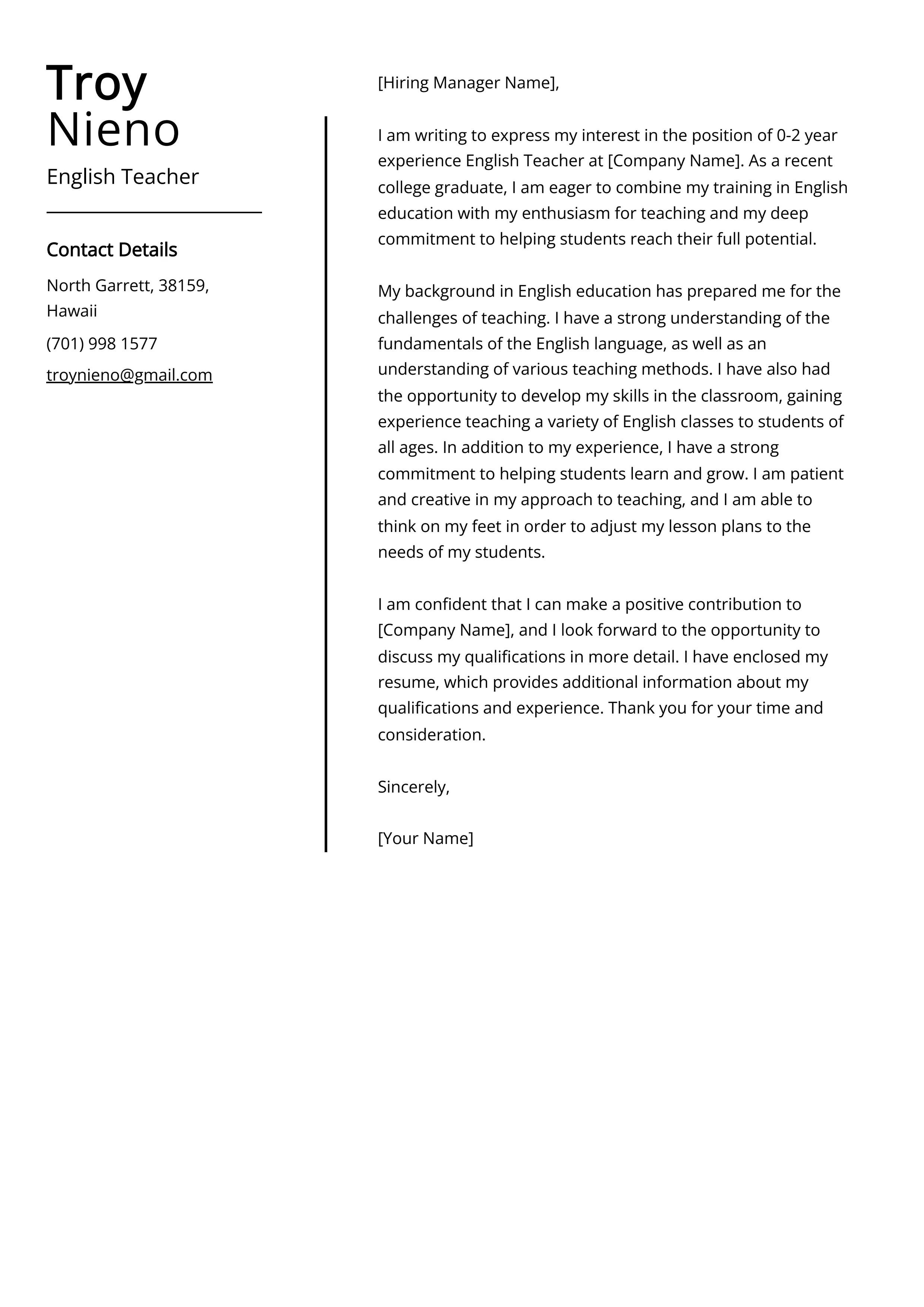
Header and Contact Information
Start your cover letter with a professional header that includes your name, contact information (phone number and email address), and the date. If you know the hiring manager’s name, include it in the address; otherwise, use a general salutation such as “Dear Hiring Manager.” Ensure that your contact information is accurate and up to date. Use a professional email address and phone number. The format of your cover letter should be clean and easy to read. You should use the same font and format as your resume. Double-check everything carefully, as even small formatting mistakes can create a negative first impression. The more time you invest in this step, the better.
Greeting and Introduction
Your greeting should be formal and professional. Then, in your introduction, state the position you’re applying for and where you found the job posting. Briefly mention why you’re interested in the role and the institution. Make sure the first paragraph captures the reader’s attention. You might mention something specific that attracted you to the school or the job. For example, “I am writing to express my enthusiastic interest in the ESL Teacher position at [School Name], as advertised on [Platform]. I was immediately drawn to your school’s commitment to [Mention a specific aspect of the school’s mission or values].” Avoid generic introductions that don’t specify your personal connection to the school.
Body Paragraphs
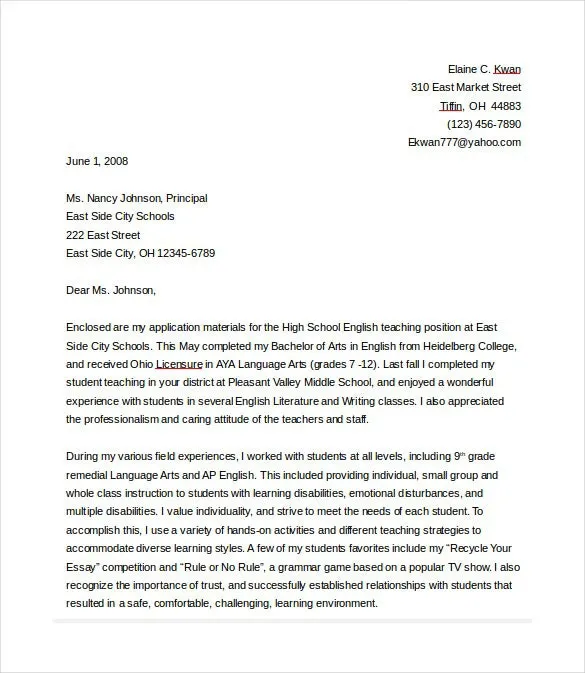
The body of your cover letter is where you will highlight your skills and experience in more detail. Each paragraph should focus on a specific aspect of your qualifications. Use strong action verbs to describe your accomplishments. Provide examples that support your claims. Explain how your skills and experience align with the requirements of the job. Customize each paragraph to match the specific needs of the employer. Avoid simply restating information from your resume; use the cover letter to expand on key points and demonstrate how your experience has prepared you for the role. Tailor the content to the specific requirements of the job description, highlighting the skills and experiences that are most relevant to the position. Focus on what you can do for the school and the students.
Closing and Call to Action
In your closing paragraph, express your enthusiasm for the opportunity and reiterate your interest in the position. Thank the reader for their time and consideration. Include a call to action, such as inviting the reader to review your resume and contact you for an interview. Make sure your closing is polite and professional. Avoid being too casual or informal. You can offer to provide additional information or references if needed. Your signature should be professional; if submitting electronically, include your typed name and a digital signature (if applicable).
Formatting and Proofreading Your Cover Letter
Font and Layout Guidelines
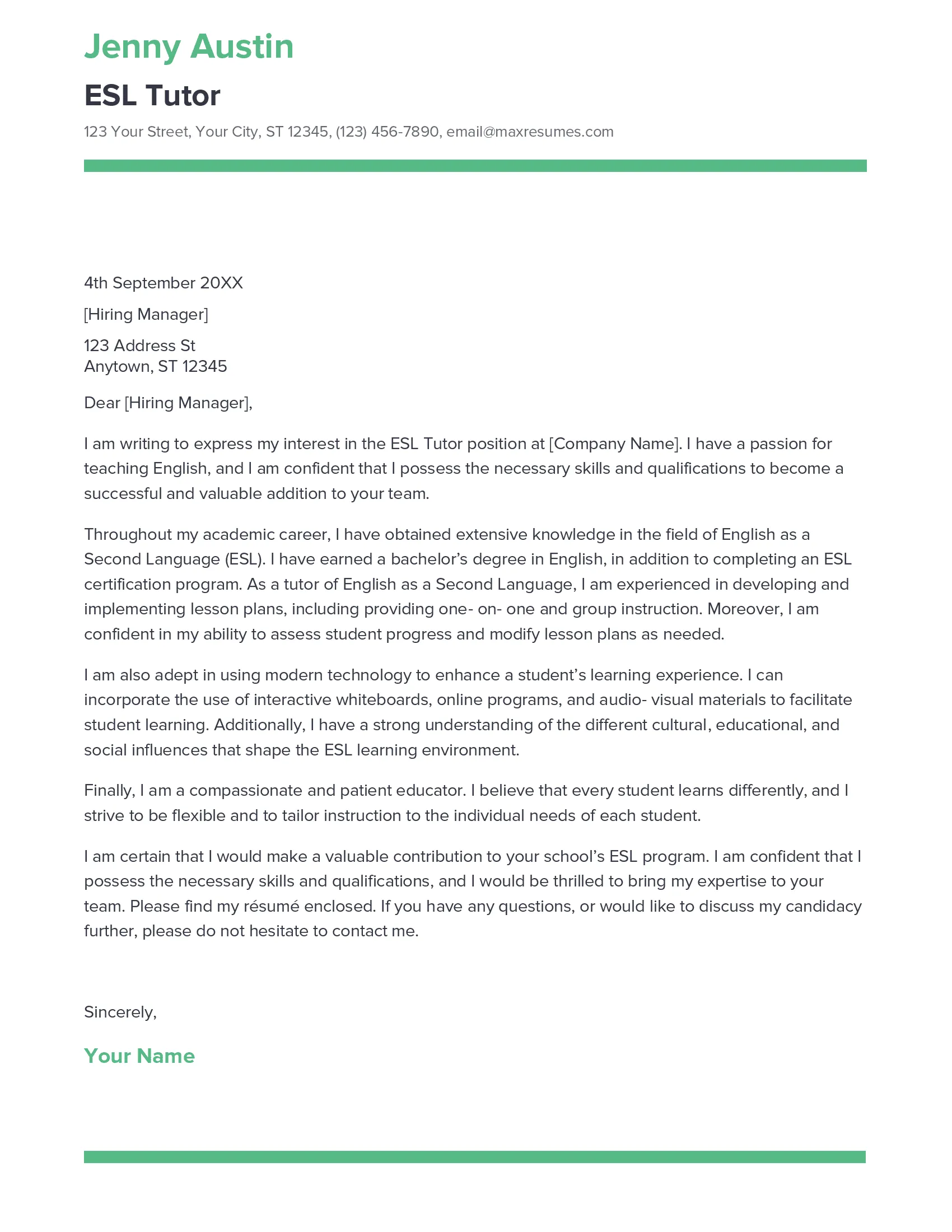
Choose a professional font that is easy to read, such as Times New Roman, Arial, or Calibri. Use a font size between 11 and 12 points. Keep the layout clean and uncluttered. Use one-inch margins on all sides. Use a single-spaced format for the body of the letter, with a double space between paragraphs. Use bullet points to highlight key skills or accomplishments. Make sure the letter is well-organized and easy to follow. Avoid using excessive bolding, underlining, or italics. Ensure that your contact information is clearly displayed in the header. A clean and well-organized layout makes your cover letter more inviting to read and highlights your professionalism.
Proofreading for Errors
Proofreading is essential! Errors in grammar, spelling, and punctuation can make a bad impression and undermine your credibility. Read your cover letter carefully, multiple times. Use a spell checker and grammar checker, but don’t rely on them entirely. Have a friend or colleague review your cover letter. Sometimes, another person can spot errors that you might miss. Check for consistency in formatting and language. Make sure the tone of your letter is professional and appropriate for the position. Ensure that all names, titles, and dates are correct. A perfect cover letter shows attention to detail and demonstrates your commitment to excellence.
Tailoring Your Cover Letter for Each Job
Researching the School or Institution
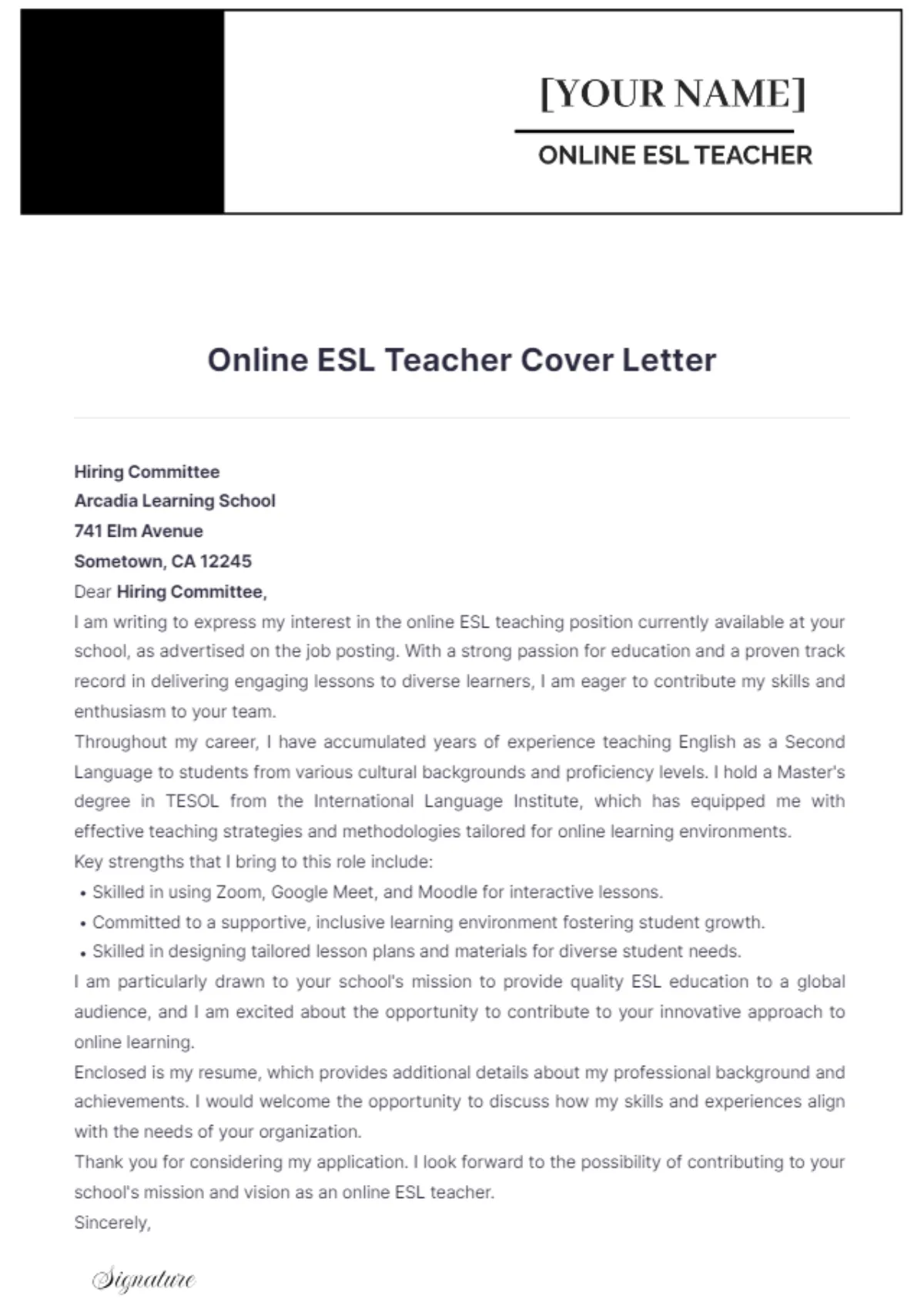
Before writing your cover letter, research the school or institution where you’re applying. Visit their website to learn about their mission, values, and teaching philosophy. Understand their specific requirements for ESL teachers. Tailor your cover letter to address those requirements. Show the hiring manager that you understand their needs. This demonstrates your interest and dedication. Consider the school’s location, student population, and curriculum. The more you know about the institution, the better you can customize your cover letter to align with their values. Doing research is an important first step, and will help you to make the right impression.
Customizing Your Letter to the Job Description
The job description is your most important guide. Analyze the job description carefully. Identify the key skills and experiences the employer is seeking. Use the same keywords and phrases from the job description throughout your cover letter, as long as they’re accurate. This will help your cover letter stand out. Make sure that your cover letter addresses each of the required qualifications. Provide specific examples that demonstrate your ability to meet these requirements. If the job description emphasizes specific teaching methodologies or software, mention your familiarity with them. Show how your skills and experiences make you the perfect candidate. Tailoring your cover letter will show your enthusiasm for the position, and make you stand out from other applicants.
In conclusion, crafting an effective ESL teacher cover letter requires careful attention to detail and a strategic approach. By following these top 5 tips, you can create a compelling cover letter that showcases your skills, experience, and passion for teaching. Remember to highlight your ESL teaching skills, emphasize your relevant experience, showcase your certifications, demonstrate your passion for teaching, and structure your letter professionally. Don’t forget to tailor your letter to each job, and always proofread for errors. Good luck with your job search!
